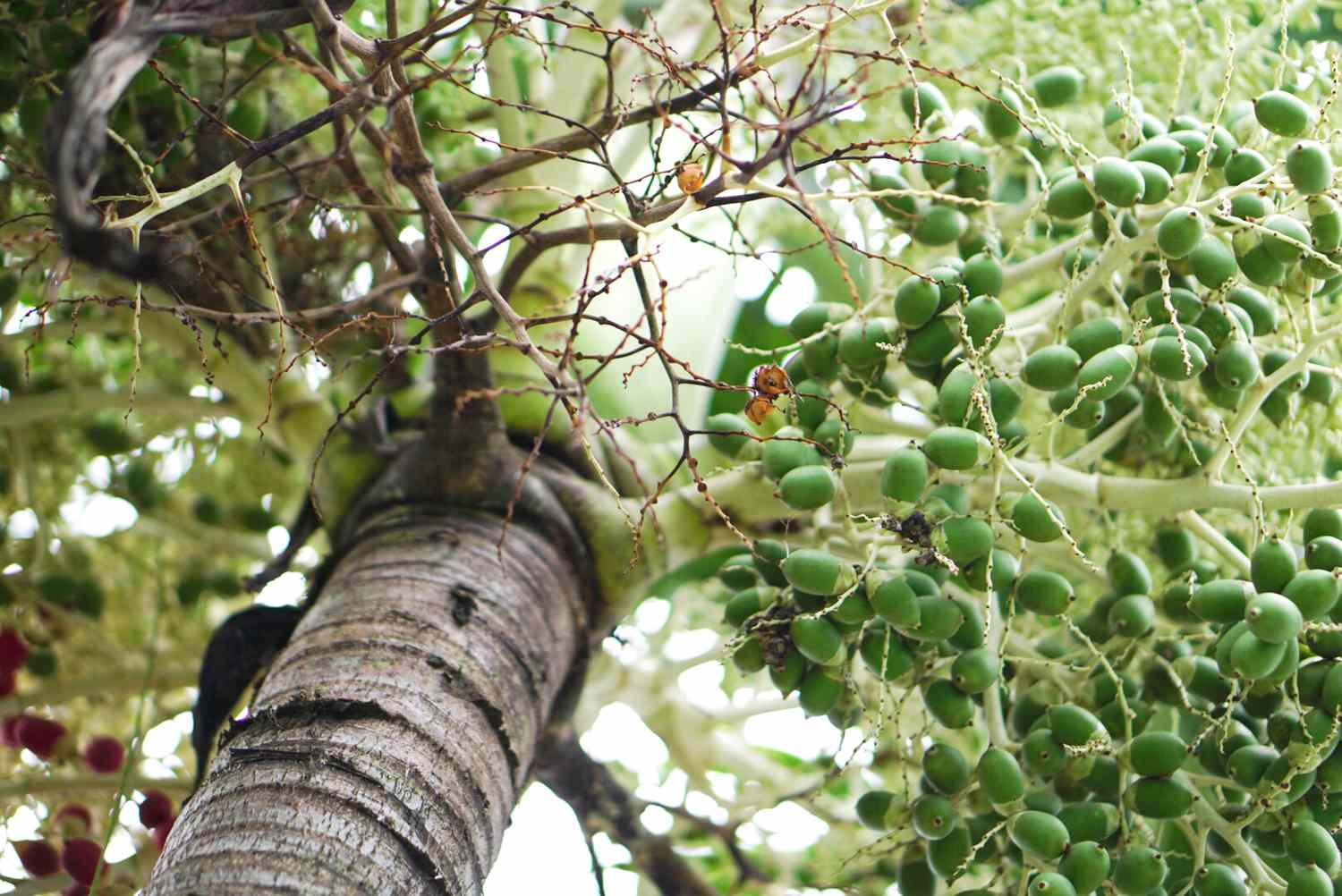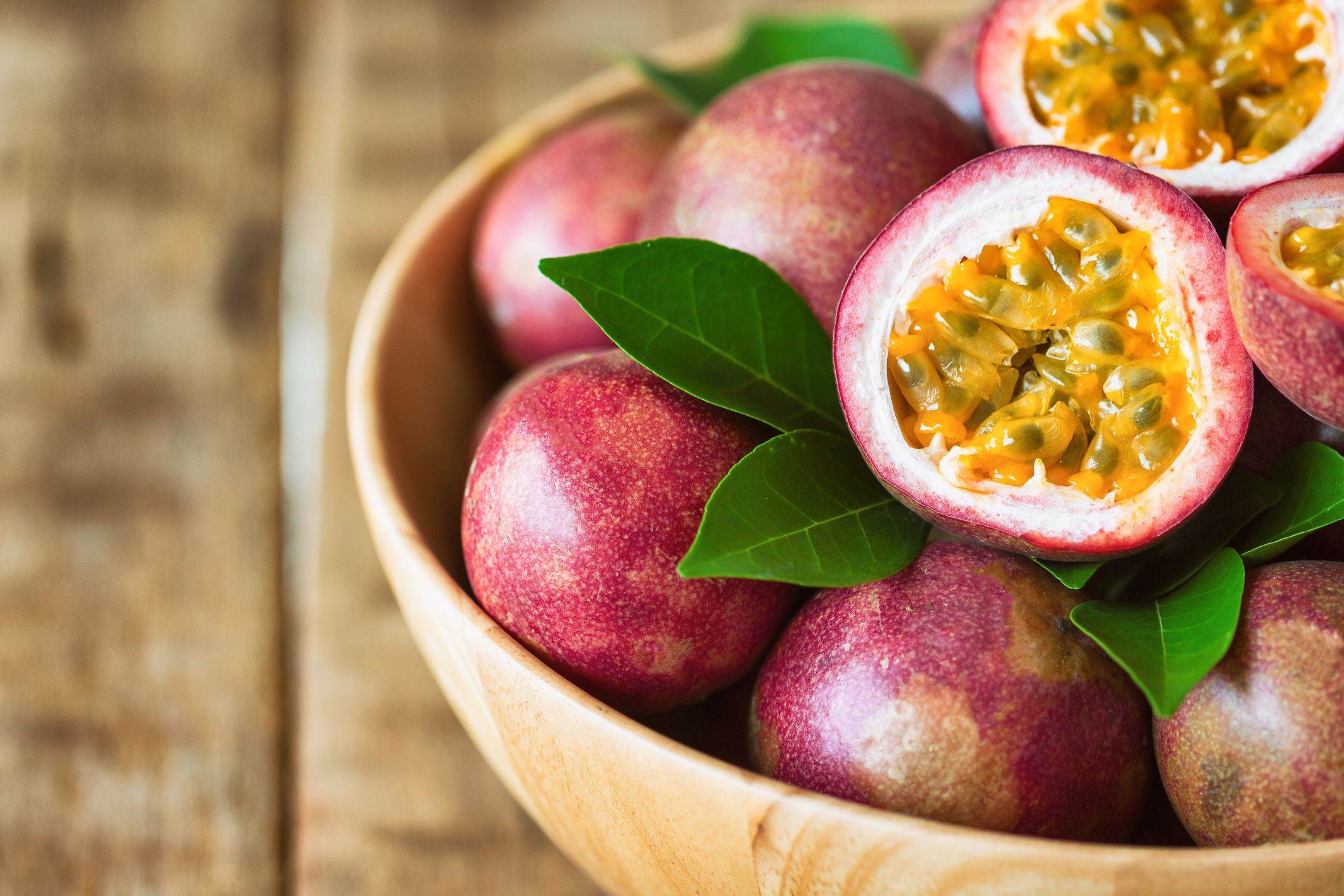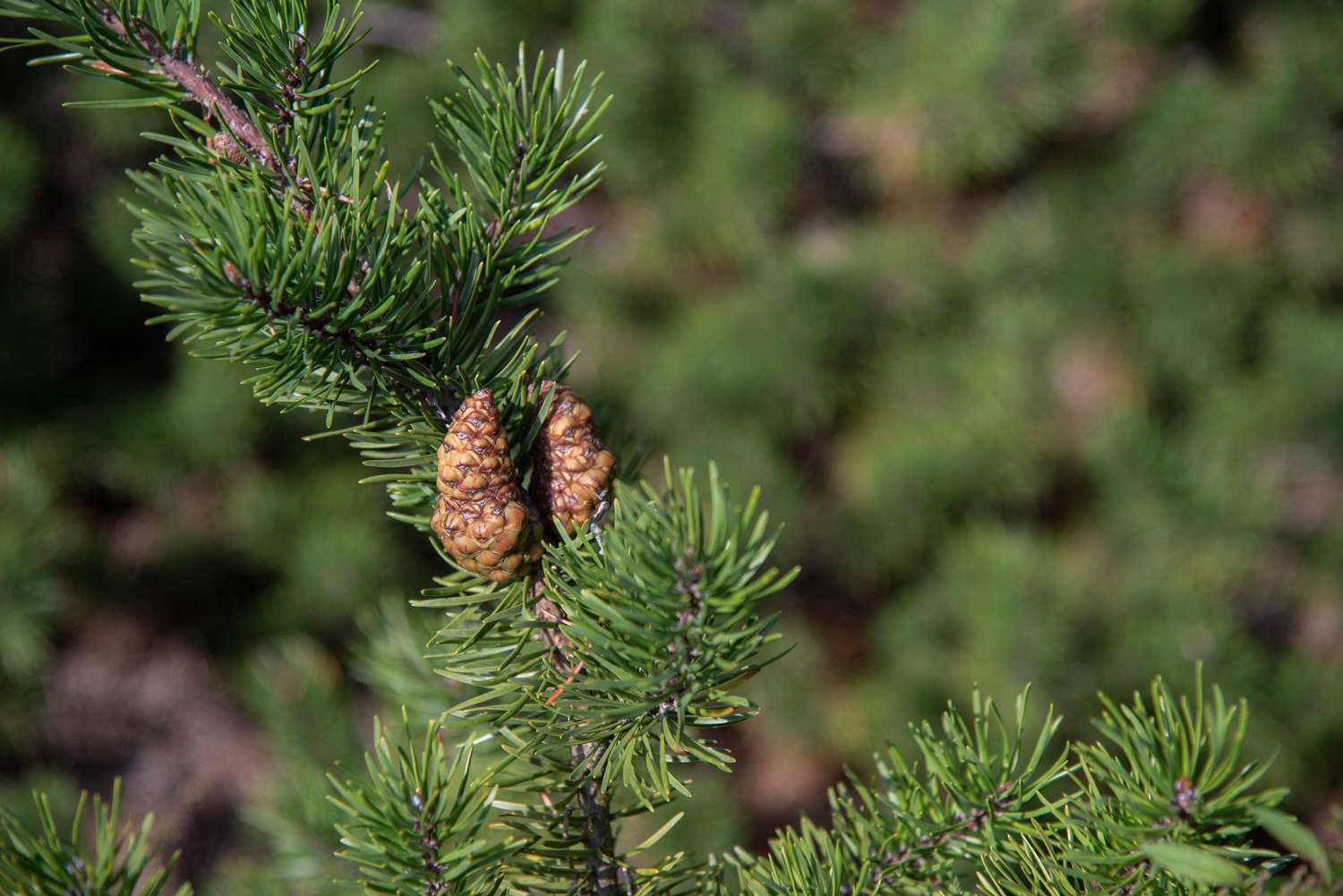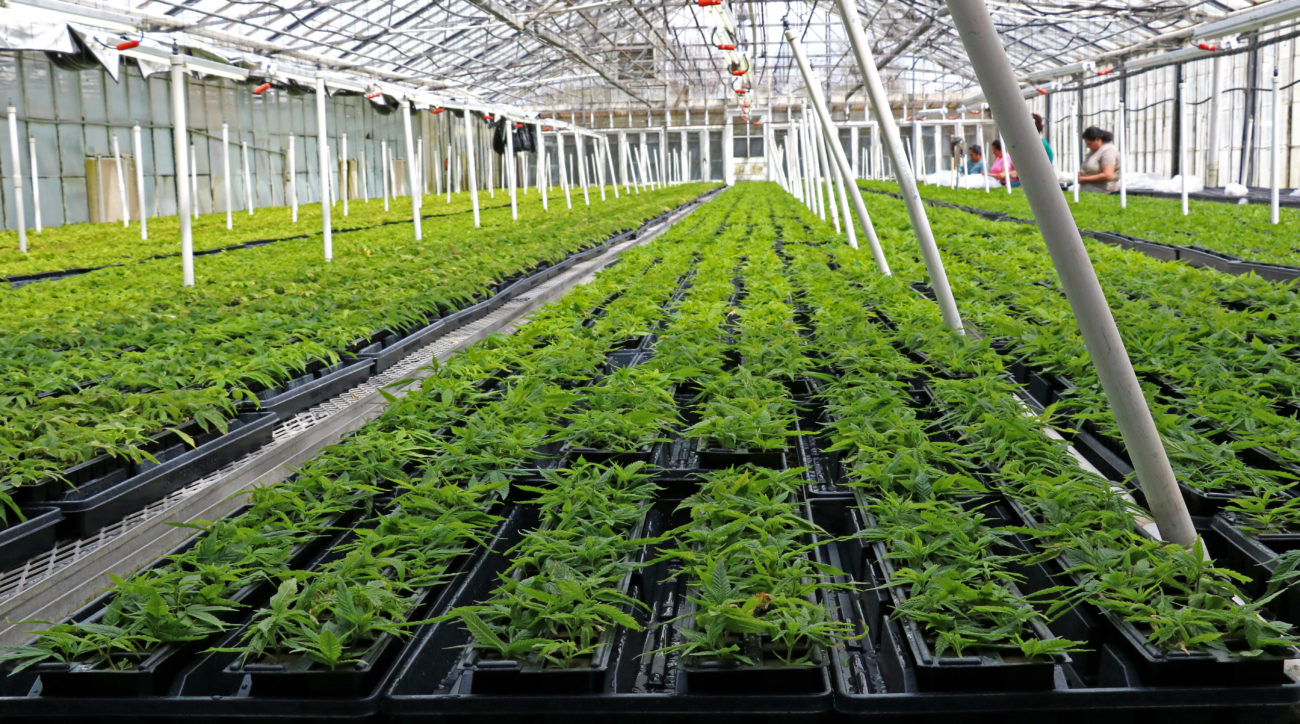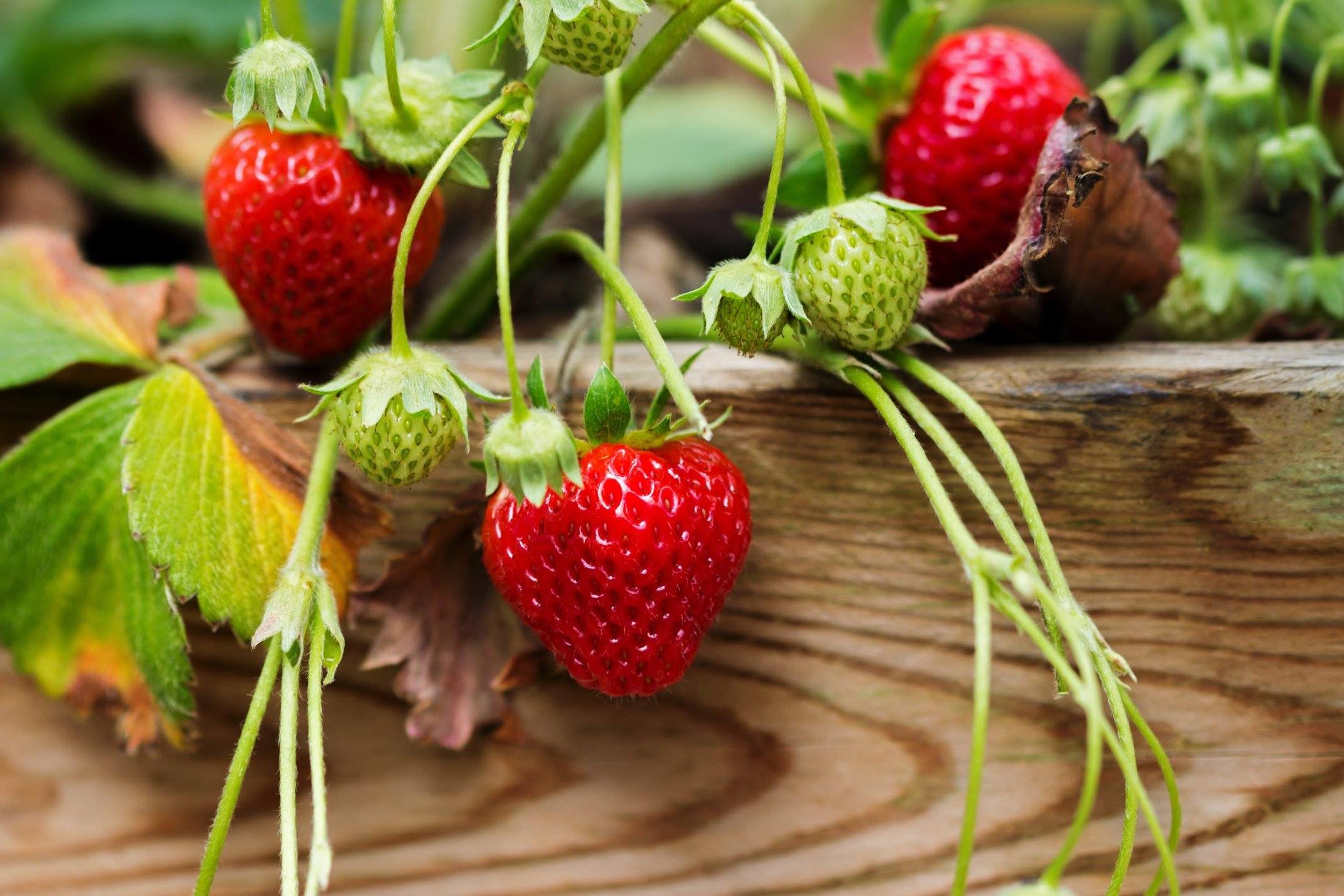Home>Gardening Basics>Getting Started>How To Grow Weeds From Seeds


Getting Started
How To Grow Weeds From Seeds
Modified: February 9, 2024
Learn the basics of getting started with growing weeds from seeds and discover step-by-step techniques for successful cultivation.
(Many of the links in this article redirect to a specific reviewed product. Your purchase of these products through affiliate links helps to generate commission for Chicagolandgardening.com, at no extra cost. Learn more)
Table of Contents
- Introduction
- Step 1: Selecting the Right Seeds
- Step 2: Preparing the Soil
- Step 3: Planting the Seeds
- Step 4: Providing Adequate Watering
- Step 5: Ensuring Sufficient Sunlight
- Step 6: Controlling Weeds and Pests
- Step 7: Proper Fertilization
- Step 8: Monitoring Growth and Development
- Step 9: Harvesting the Weeds
- Conclusion
Introduction
Welcome to the world of gardening! Growing your own plants can be an incredibly rewarding experience. While most people focus on cultivating flowers and vegetables, have you ever considered growing weeds? Contrary to popular belief, not all weeds are harmful or invasive. In fact, there are several varieties of weeds that can bring beauty and diversity to your garden.
Before we dive in, let’s clarify what we mean by “weeds.” In the context of this article, we are referring to plants that tend to grow naturally and prolifically in the wild, without any intentional cultivation. These plants may have a bad reputation due to their invasive nature, but they can also offer unique benefits and aesthetic appeal.
If you’re ready to embrace the wild side of gardening and give growing weeds from seeds a try, you’ve come to the right place. In this article, we will guide you through the process of selecting the right seeds, preparing the soil, planting the seeds, providing adequate care, and harvesting your beautiful weeds.
But why would you want to grow weeds in the first place? Well, besides their natural beauty, some weeds have medicinal properties, attract beneficial insects, or provide food for wildlife. Additionally, incorporating weeds into your garden can help create a more diverse and sustainable ecosystem.
However, like any other plants, growing weeds from seeds requires careful attention and maintenance. By following the steps outlined in this guide, you’ll be able to successfully grow and enjoy the beauty of these misunderstood plants.
Step 1: Selecting the Right Seeds
When it comes to growing weeds from seeds, the first step is to select the right varieties that are suited to your specific garden conditions and preferences. Here are a few factors to consider when choosing your weed seeds:
- Climate: Different weed species have varying preferences for temperature, humidity, and sunlight. Research the specific weeds you’re interested in growing and ensure they are compatible with your local climate.
- Soil Type: Weeds can adapt to different soil types, but some thrive in specific conditions. Determine the composition and pH level of your soil and choose weed seeds that will flourish in those conditions.
- Sunlight Requirements: Consider the amount of sunlight your garden receives throughout the day. Some weeds prefer full sun, while others can tolerate partial shade.
- Intended Purpose: Decide what you want to achieve with your weeds. Are you looking for attractive flowers, foliage, or edible varieties? Select seeds accordingly.
Once you’ve identified the criteria, it’s time to source your weed seeds. You can find them at local gardening stores, online seed catalogs, or even from fellow gardeners. It’s essential to choose reputable sources to ensure the quality and viability of the seeds.
Additionally, consider the growth habits and invasive potential of the weeds you plan to grow. While some weeds are harmless and easily controlled, others can quickly take over your garden. Do thorough research and exercise caution to prevent any unwanted spread.
Remember, diversity is key. Opt for a variety of weed seeds to create a visually appealing and dynamic garden. Experiment with different colors, textures, and heights to make your garden a true showcase of the wonders of weeds.
By taking the time to select the right weed seeds, you’ll set a solid foundation for a successful and enjoyable gardening experience. Now that you’ve chosen your seeds, it’s time to move on to the next step: preparing the soil.
Step 2: Preparing the Soil
Preparing the soil is crucial for the successful growth of any plant, including weeds. Here are the essential steps to follow when preparing your garden soil for growing weeds:
- Clear the area: Start by removing any existing plants, weeds, rocks, or debris from the area where you plan to grow your weeds. This will give your weeds a clean and unobstructed space to thrive.
- Loosen the soil: Use a garden fork or a tiller to loosen the soil. This will improve its structure, allowing better water drainage and root penetration. Avoid over-tilling, as it can disrupt the soil’s natural ecosystem.
- Amend the soil: Assess the quality of your soil and determine if any amendments are needed. Add organic matter such as compost, well-rotted manure, or peat moss to improve the soil’s fertility, moisture retention, and drainage.
- Test the pH: Weeds generally prefer a slightly acidic to neutral pH range. Test your soil’s pH level using a soil testing kit and make adjustments if necessary. Adding lime for acidic soil or sulfur for alkaline soil can help balance the pH levels.
- Level the soil: Rake the soil to create a level surface. This will provide an even planting area and promote uniform growth of your weed seeds.
Take your time during the soil preparation process to ensure that you have created an optimal environment for your weed seeds. This will give them the best chance to germinate and establish strong root systems.
It’s worth noting that weeds, by nature, are adapted to grow in less-than-ideal conditions. This means that even if your soil is not perfect, you can still have success in growing weeds. However, by investing time and effort into preparing the soil, you can create an environment that promotes healthier and more vigorous weed growth.
Once you have prepared the soil, you’re ready to move on to the next step: planting the weed seeds. Get your tools ready and let’s start sowing!
Step 3: Planting the Seeds
Now that you have selected the right weed seeds and prepared the soil, it’s time to get your hands dirty and plant the seeds. Follow these steps to ensure successful germination and establishment of your weed plants:
- Read the instructions: Carefully read the seed packet instructions to determine the ideal planting depth and spacing for your chosen weed seeds. Different weed varieties have varying requirements.
- Prepare the planting holes: Use a small garden trowel or your fingers to create small holes in the soil. The depth should be in accordance with the instructions provided on the seed packet.
- Plant the seeds: Place one or two weed seeds in each planting hole and cover them lightly with soil. Gently press down to ensure good seed-to-soil contact without compacting the soil too much.
- Water thoroughly: After planting, give your newly sown weed seeds a good watering. Ensure that the soil is evenly moist but not waterlogged. Adequate moisture is essential for germination.
- Label your plantings: To keep track of your different weed varieties, consider labeling each planting area or using plant markers. This will help you identify the specific weeds as they start to grow.
It’s important to note that weed seeds have different germination requirements. Some may require light to germinate, so avoid covering them with soil. Others may benefit from a process called stratification, where the seeds are exposed to moisture and cold temperatures for a certain period. Check the seed packet instructions for any specific needs.
While weeds are generally known for their robust nature, they still need proper care during the germination and early growth stages. Be patient and consistent with watering, providing adequate sunlight, and protecting the young seedlings from extreme weather conditions.
With the weed seeds planted, it’s time to move on to the next step: ensuring adequate watering for your growing weeds. Stay tuned for more tips on caring for your plants and ensuring their healthy growth!
Step 4: Providing Adequate Watering
Water is a vital component for the growth and health of all plants, including weeds. Adequate watering is essential to support the germination, establishment, and ongoing growth of your weed plants. Follow these guidelines to ensure your weeds receive the right amount of water:
- Monitor soil moisture: Keep a close eye on the moisture levels of the soil. As the top layer starts to dry out, it’s a sign that it’s time to water your weed plants.
- Water deeply: When watering, make sure to water deeply, allowing the moisture to penetrate the roots. Shallow watering can lead to weak and shallow root systems.
- Water in the morning: Aim to water your weeds in the early morning. This allows the plants to absorb moisture before the heat of the day evaporates it. Watering in the evening can lead to prolonged moisture on the leaves, potentially causing fungal diseases.
- Avoid overwatering: While weeds need adequate moisture, it’s important to avoid overwatering. Excessive water can lead to root rot and other issues. Ensure that the soil is evenly moist, but not soggy.
- Consider using drip irrigation: Drip irrigation systems can be beneficial for watering weeds. They provide a slow and steady supply of water directly to the root zone, reducing water wastage and minimizing weed competition.
It’s important to note that the watering requirements of weeds may vary depending on the specific species and environmental conditions. Some weeds are more drought-tolerant, while others require consistently moist soil.
Regularly observe your weed plants and adjust your watering practices accordingly. Pay attention to signs of stress such as wilting or yellowing leaves, as these can indicate inadequate or excessive moisture levels. Adjust the frequency and duration of watering as needed to provide optimal growing conditions.
Now that your weeds are receiving adequate water, let’s move on to the next step: ensuring sufficient sunlight for their growth. Stay tuned to learn about the importance of sunlight and how to optimize its availability for your weed plants!
Step 5: Ensuring Sufficient Sunlight
Sunlight is a crucial factor in the growth and development of plants, including weeds. Adequate sunlight provides the energy necessary for photosynthesis, which fuels the growth and reproduction of your weed plants. Follow these guidelines to ensure your weeds receive sufficient sunlight:
- Observe sunlight patterns: Take note of the sunlight patterns in your garden. Observe how the sunlight moves throughout the day and identify areas that receive the most sunlight.
- Select appropriate locations: Choose planting locations for your weed plants that receive at least 6-8 hours of direct sunlight per day. Weeds, like other plants, require a certain amount of light to thrive.
- Monitor shade conditions: Keep an eye on any shade-causing structures or nearby trees that may obstruct sunlight. Trim back overhanging branches or choose weed varieties that can tolerate partial shade if needed.
- Consider reflective surfaces: Utilize reflective materials such as white stones or light-colored mulch to maximize sunlight exposure. They can help redirect and amplify sunlight to reach your weed plants.
It’s important to note that different weed species have varying requirements for sunlight. Some weeds thrive in full sun, while others can tolerate partial shade. Research the specific weed varieties you’re growing to understand their sunlight preferences.
Keep in mind that lack of sufficient sunlight can lead to weak, leggy growth and reduced flower production in weeds. On the other hand, too much sunlight, especially in hot climates, can cause sunburn or heat stress. Finding the optimal balance is crucial for the health and vigor of your weed plants.
Regularly assess the sunlight conditions in your garden and make any necessary adjustments. If needed, you can relocate potted weed plants or strategically plant shade-loving varieties in areas with less direct sunlight. By ensuring sufficient sunlight, you’ll provide your weed plants with the energy they need to flourish.
With sunlight taken care of, let’s move on to the next step: controlling weeds and pests to maintain the health and vitality of your growing garden. Stay tuned for valuable tips on managing these potential challenges!
Step 6: Controlling Weeds and Pests
As you cultivate your weed garden, it’s important to implement effective strategies to control weeds and pests. Left unmanaged, these can compete with your desirable weed plants for resources and hinder their growth. Follow these guidelines to keep weeds and pests in check:
- Mulch your garden: Apply a layer of organic mulch around your weed plants. This helps suppress weed growth by blocking sunlight and preventing weed seeds from germinating. Additionally, mulch helps retain soil moisture and regulates soil temperature.
- Hand-pull weeds: Regularly inspect your garden and hand-pull any emerging weeds. Be sure to remove the entire weed, including the roots, to prevent regrowth.
- Use weed barriers: Consider using weed barriers, such as landscape fabric or cardboard, in between weed plants. These physical barriers obstruct weed growth while allowing moisture and nutrients to reach your desirable weed plants.
- Rotate crops: If you have multiple weed varieties in your garden, practice crop rotation. This helps disrupt the life cycles of pests that may target specific weed species.
- Encourage beneficial insects: Attract natural predators like ladybugs, lacewings, and spiders to your garden. These beneficial insects can help control pest populations, reducing the need for chemical interventions.
- Monitor for pests: Regularly inspect your weed plants for signs of pest damage, such as holes in leaves or discoloration. Identify the specific pests and research appropriate organic solutions to address the issue.
- Consider companion planting: Planting certain herbs, flowers, or vegetables alongside your weed plants can help repel pests or attract beneficial insects. For example, marigolds can deter certain pests, while sweet alyssum can attract pollinators.
It’s essential to prioritize organic methods of weed and pest control to maintain a healthy and sustainable garden. While chemical pesticides may offer quick solutions, they can harm beneficial insects and disrupt the overall balance of your garden ecosystem.
Remember to stay vigilant and address weed and pest issues as soon as they arise. By implementing these control measures, you’ll ensure that your weed plants can grow and thrive in a weed-free and pest-free environment.
Now that you’re actively managing weeds and pests, let’s move on to the next step: providing proper fertilization for healthy and robust weed growth. Stay tuned for valuable tips on feeding your weed plants!
Step 7: Proper Fertilization
Fertilization plays a crucial role in supporting the growth and development of your weed plants. Providing them with the necessary nutrients can ensure healthy foliage, vibrant blooms, and increased resistance to diseases. Follow these guidelines for proper fertilization:
- Test the soil: Conduct a soil test to determine its nutrient composition. This will help you identify any deficiencies and guide your fertilizer choices.
- Choose the right fertilizer: Select a balanced fertilizer that contains a mix of essential nutrients, such as nitrogen (N), phosphorus (P), and potassium (K). The specific ratio will depend on the needs of your weed plants.
- Apply fertilizer at the right time: Time your fertilizer applications according to the growth stage of your weed plants. Generally, it’s best to apply fertilizer in early spring, when the plants start actively growing, and throughout the growing season as needed.
- Follow the recommended dosage: Read the instructions on the fertilizer package carefully and apply the recommended dosage. Avoid over-fertilizing, as it can lead to nutrient imbalances and burn the plants.
- Use organic alternatives: Consider using organic fertilizers, such as compost or well-rotted manure, to naturally enrich the soil and provide nutrients to your weed plants. Organic fertilizers also improve the soil structure and promote microbial activity.
- Water after fertilization: After applying fertilizer, water your weed plants thoroughly. This helps dissolve and distribute the nutrients into the soil for maximum absorption by the roots.
- Monitor for signs of nutrient deficiencies: Regularly inspect your plants for any signs of nutrient deficiencies, such as yellowing leaves or stunted growth. Adjust your fertilizer application if necessary.
Keep in mind that different weed varieties may have specific nutrient requirements. Research the specific needs of the weeds you’re growing and tailor your fertilization approach accordingly.
Remember, more isn’t always better when it comes to fertilization. Applying excessive amounts can lead to nutrient runoff, environmental pollution, and imbalances in the soil. It’s important to strike a balance and provide your weed plants with the nutrients they need in a responsible manner.
Now that your weed plants are receiving proper nourishment, it’s time to move on to the next step: monitoring their growth and development. Stay tuned for valuable insights on tracking the progress of your weed garden!
Step 8: Monitoring Growth and Development
Monitoring the growth and development of your weed garden is an important step in ensuring its overall health and progress. By keeping a close eye on your weed plants, you can identify any issues early on and take appropriate actions. Follow these guidelines for effective monitoring:
- Observe plant appearance: Regularly observe the overall appearance of your weed plants. Look for healthy foliage, vibrant blooms, and any signs of stress or diseases, such as wilting leaves, yellowing, or discoloration.
- Inspect for pest damage: Check for any signs of pest infestations, such as chewed leaves, webs, or visible insects. Early detection and intervention can help prevent significant damage to your weed plants.
- Monitor growth rate: Keep track of how your weed plants are progressing in terms of growth rate. Take note of any unusual or stunted growth that may indicate nutrient deficiencies, lack of sunlight, or other factors affecting their development.
- Record flowering and fruiting: Note the timing and abundance of flowers and fruits produced by your weed plants. This will help you track their reproductive cycle and ensure optimal pollination and seed production if desired.
- Assess weed density: Monitor the growth of the weed plants themselves. Keep an eye on their density and spread, ensuring that they don’t overcrowd other desirable plants or take over your garden space.
- Take photographs: Capture photos of your weed garden throughout its growth stages. This will not only serve as a visual record but also allow you to compare and track the progress of your plants over time.
Regular and attentive monitoring enables you to make informed decisions regarding watering, fertilization, pest control, and other necessary interventions. It allows you to address any issues promptly and maintain the overall health and appearance of your weed garden.
Don’t hesitate to consult gardening references or seek advice from experienced gardeners if you encounter any challenges or concerns during the monitoring process. Their expertise and insights can provide valuable guidance in ensuring the success of your weed garden.
With your weed plants under careful observation, it’s time to move on to the next step: harvesting and enjoying the fruits of your labor. Keep reading to discover how to harvest your weeds effectively!
Step 9: Harvesting the Weeds
After nurturing your weed garden, the final step is to harvest the weeds. Harvesting allows you to enjoy the fruits of your labor, whether it’s for culinary purposes, medicinal use, or simply appreciating their beauty. Follow these guidelines for a successful weed harvest:
- Know the right time: Harvest your weeds at the appropriate stage of growth, depending on their intended use. For culinary purposes, herbs and young greens are typically harvested when they reach a certain size and before they bolt or flower. Medicinal herbs may be harvested when the active compounds are at their peak concentration.
- Use sharp tools: Use sharp garden shears, scissors, or a knife to make clean cuts when harvesting your weeds. Blunt tools can damage the plant and impact its future growth.
- Harvest in the morning: Ideally, harvest your weeds in the morning when the plants are hydrated and temperatures are cooler. This helps preserve their quality and flavor.
- Trim or pluck leaves: For leafy weeds, such as spinach or lettuce, trim or pluck the outer leaves as needed. This allows the inner leaves to continue growing, ensuring a continuous harvest throughout the growing season.
- Handle with care: Treat your harvested weeds gently to avoid bruising or damaging the plant material. Place them in a basket or container lined with a damp cloth or paper towel to keep them fresh and crisp.
- Store properly: If you’re not using the harvested weeds immediately, store them appropriately to maintain their freshness. Some weeds can be stored in the refrigerator, wrapped in a damp towel or stored in a plastic bag. Others may be dried or preserved for future use.
Remember, not all weed varieties are suitable for consumption or other purposes, so be sure to research the specific weed plants you have in your garden. Some weeds may have toxic parts or require special preparations, so exercise caution and follow proper guidelines before using them.
By harvesting your weeds responsibly, you’ll continue to enjoy their benefits while encouraging further growth and productivity in your garden. So go ahead, harvest those delicious and nutritious weeds!
Congratulations! You’ve completed all the necessary steps to grow and harvest weeds from seeds. Whether you’ve cultivated edible weeds, medicinal varieties, or simply embraced their natural beauty, you’ve embarked on a unique journey in gardening. With your newfound knowledge and experience, continue to experiment, learn, and appreciate the wonders that weeds can bring to your garden.
Conclusion
Congratulations on successfully growing weeds from seeds! Through careful seed selection, soil preparation, planting, providing water and sunlight, controlling weeds and pests, proper fertilization, monitoring growth, and harvesting, you have nurtured a vibrant and diverse weed garden.
Embracing weeds in your gardening journey offers a unique opportunity to explore the beauty, benefits, and resilience of these often-misunderstood plants. From their striking flowers and foliage to their medicinal properties and ability to attract beneficial insects and wildlife, weeds can contribute to a thriving and sustainable garden ecosystem.
As you continue on your weed-growing adventure, remember to be mindful of the characteristics and growth habits of the weed species you choose. Some weeds may require more attention and careful management to prevent them from becoming invasive or overpowering other plants in your garden.
Keep honing your skills in seed selection, soil preparation, and providing the ideal growing conditions for your weeds. Through regular monitoring, you can address any challenges that arise, whether they be nutrient deficiencies, pest infestations, or competition from other plants.
Additionally, don’t forget the potential uses of your harvested weeds. Whether you incorporate them into your culinary creations, utilize them for their medicinal properties, or simply appreciate their natural beauty, your efforts in growing weeds from seeds will be rewarded.
Remember to share your knowledge and experiences with other gardening enthusiasts. By spreading the word about the benefits and wonders of growing weeds, you can inspire others to explore the world of unconventional gardening and promote a more varied and biodiverse landscape.
Thank you for joining us on this journey. We hope that this guide has provided you with valuable insights and practical tips for successfully growing weeds from seeds. As you continue to garden and explore new possibilities, may your weed garden thrive and bring you joy for years to come!
